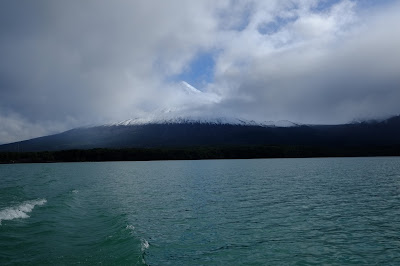After a night of drinking and catching up, Matt and I wandered around Santiago a bit. I kinda liked Santiago, the centre has a bunch of pretty shit to see.
The ridiculously huge flag in front of the Palacio de la Moneda (Coin Palace?), the seat of the president.
There was also a rather large procession of people walking past the palace, which I initially thought would've been protesting the Chilean education system as there was a bunch of those in other cities. Turns out they wanted to legalise weed.
Museum of Beautiful Art. Didn't go inside though...
Across the crappy river/canal thing from the Museum above, there was an entire neighbourhood full of street art, and it happened to be between us and the mountain we were thinking of going up.
When we got to the hill we were pretty tired and decided to revisit the following day and try and catch the sunset. On the way back to the hostel we walked through the weed march. Seemed a lot bigger than it actually was. We thought there must be like 100,000 people there, but it turns out there was only 15,000. Still kinda cool.
The next day we went back to the hill to catch the cable car to the top, which sounded like it'd have a pretty nice view.
ehh, not really the most interesting city from above, and hard to tell if it's covered in fog, or smog...
\
There was a nice big statue of the virgin of whatever though.
We spent a while trying to work out what to do after Santiago, and wanting to get out of the city. Matt brought over all his snowboarding stuff and a bunch of mine, so we were pretty keen for that. To that end, we got a bus to the south, to Chile's lakes district, which sounded really beautiful even if we couldn't go to the snow.
A few hours on a bus later, we arrived at Puerto Varas, a nice little half-German town next to one of the aforementioned lakes. We found a hostel and discovered that the skifield around the corner was open, but they were still clearing rocks from the recent volcanic eruption, so they weren't hiring out gear.
So, the next day we hired a car and went for a drive to some of the other lakes (and to check out the skifield).
Cool hotel we could see from the hostel.
The weather in Puerto Varas was always something like this.
We then carried on towards another lake, which supposedly had a nice walk around it for an hour or two. Probably wouldn't've been that nice anyway due to the weather, but we were told that we couldn't drive to the trailhead because of the condition of the road. Someone the kindly offered us a half-hour excursion on the lake in his boat. Wasn't too expensive, so we went with him.
On the way to the lake we stopped by this rager. On the way back we had a picnic there ^^
Hints of the spectacular-ness of the lake when the weather isn't shit (don't visit this place in June, it's already not sunny and you can't ski).
The volcano with the skifield on it.
This miniature house was built by some people as a playhouse for their grandkids. Too cool.
After the lake with the boatride, we started driving to another lake that might've been nice, but decided when we were passing by a third lake that we couldn't be bothered driving anymore, and turned around after taking a couple photos.
Another view of the skifield, from the edge of the lake by Puerto Varas.
After a bit more indecision, we caught a bus to Bariloche, just across the border in Argentina. For most of the drive it was too cloudy to see more than a few metres out of the windows, but a little after we crossed the border there was sun, and it was quite nice:
We toyed with hiring a car and walking up this guy, but decided it'd be too much effort. Also it's fucking cold in Bariloche.
First view of Bariloche, with the not-very-snowy mountains behind. No skiing here either :(
When we arrived in Bariloche we wandered around trying to find a cheap hostel, thinking in the official conversion rate. If you're traveling in Argentina and rely on the official exchange rate, everything is stupidly fucking expensive compared to the rest of Latin America. If you bring cash you can change it on the street for a much better rate, in which case Argentina is rather cheap.
In the end we found some place, and walked around in the city for a little bit before bed. The next day we went to check out the lake and wanted to visit the paleontology museum, which is supposedly pretty good. More on that later...
The lake was really nice, even though it was hella windy and freezing and there was a lot of cloud.
A photo of the paleontology museum, which only opened at 4pm anyway, so I can't give an impression of the inside. Not too impressive from the outside though...
In the evening we watched a disappointing game of the Copa America (FIFA's "world cup" of Latin America), then went to Jurassic World, which was pretty awesome.
The next morning Matt left to go back to Chile and head north, either to snowboard or visit Atacama (in the end there was actually fucking nowhere to ski, so he went to Atacama), and I got a bus to Buenos Aires with João, a friend I'd been traveling with since I got to Chile (and who therefore gained the dubious honour of being my second-longest traveling companion, go João!).
Got a cool surprise for the next post.

































































































